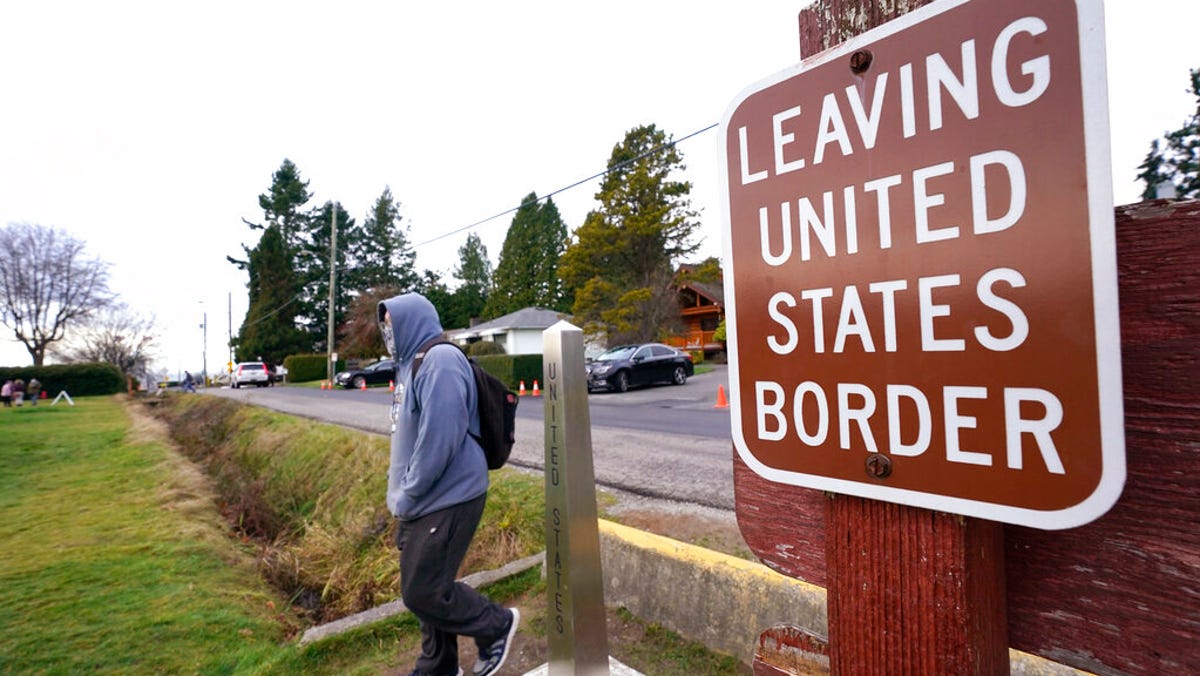
USA TODAY

COVID-19 testing is now required for all US-bound international flyers
Beginning Jan. 26, the CDC will require universal COVID testing for all passengers on international flights to the US.
USA TODAY
The Department of Homeland Security announced via tweet Friday that the United States, Canada and Mexico have agreed to keep their land borders closed until at least March 21.
“To protect our citizens and prevent the further spread of COVID-19, the United States, Canada and Mexico are extending restrictions on non-essential travel at our land borders until March 21,” the DHS tweet said. “We are also working to ensure that essential trade and travel remains open.”
March 21 marks the one-year anniversary of the first border closures, which came as the coronavirus pandemic took off in the US. The closures, which apply to all land and sea borders, have been extended every month since then. Technically, Americans can still fly to either country, although Canada has made that option more difficult.
“These measures will remain in effect as long as we think they should last,” Canadian Prime Minister Justin Trudeau said when the border closures were announced. In October, he reiterated that point, saying his country’s southern border would not reopen until the United States had their COVID-19 case numbers under control.
Since then, Canada has further tightened restrictions, requiring people entering from the US to prove that they are traveling for an essential purpose and quarantined for 14 days upon arrival. Canada began to require a negative COVID-19 test for anyone arriving by air.
According to data from USA TODAY, more than 28.1 million people have tested positive for COVID-19 in the US and nearly 500,000 have died.
The number of cases has fallen since a peak in early January, largely due to holiday gatherings.
The United States is reporting less than 500,000 new cases of coronavirus per week, returning to levels not seen since late October, according to a USA TODAY analysis of data from Johns Hopkins University.
The 489,902 cases recorded in the week ending Sunday are less than a third of the peak in July. However, it is more than double the number of new cases since the start of the last wave.
The United States reported 13,106 deaths from COVID-19 in the week ending Sunday, with an average of 78 Americans dying every hour. In the worst case last month, the country reported 140 deaths per hour.
The University of Washington Institute for Health Metrics and Evaluation (IHME) predicts that 589,197 Americans will have died by the end of May. The good news is that the institute projects that the death toll could drop to less than 500 a day by then, and the number could be even lower if Americans are vigilant about wearing masks, which are mandatory on federal land. (including national parks) and on public transport, including commercial airlines, trains and buses.
For comparison: Canada, which has had a total of 843,301 cases and 21,630 deaths, according to the World Health Organization, had fewer than 30,000 new cases and fewer than 1,000 deaths per week in February.
The WHO found that Mexico, which has had more than 2 million cases, is running down in February with less than 75,000 new cases per week. The death rate has remained at more than 7,500 deaths per week this month, contributing to a cumulative total of 179,797.
Contributors: Ken Alltucker, John Bacon, Jordan Culver, and Michael Stucka